Content:
Planting black or red currants is a rather complex process that requires not only a lot of work, but also adherence to the correct technology. One of the most important points is the distance between the currant bushes when they are planted. The article will consider this circumstance in more detail.
Conditions for growing currants
When choosing a place for planting currants, you must take into account the characteristics of this plant. One of them is that it is very fond of sunlight. Of course, this plant is quite unpretentious and is quite capable of surviving if the site is in the shade. However, the yield will be much lower than usual.
There are other conditions that affect the yield of the berry bush. Swampy soils are contraindicated for him. It is also undesirable if the site is located in a lowland, and after rain waterlogging occurs. It is unacceptable when the groundwater is too high. In the event that the depth to them is less than one meter, it is not recommended to plant currants.
The foregoing does not contradict the fact that the plant needs abundant watering. However, if the ground is swampy, it can lead to root rot. To prevent this from happening, it is advisable to drain the soil. For this purpose, it is possible to organize grooves around the plants for water drainage, and also make a sand layer in the soil.
Important! You should not plant bushes next to apple trees, other fruit trees. They will suppress each other's development
Also, when planting and growing, you need to avoid cold northerly winds. This can be done by choosing the right place or by planting plants that will become protection from the wind. For this purpose, for example, you can use the planting of corn.
Of great importance is not only the type of soil, but also the condition of the seedlings. It is considered normal when there are three to five skeletal roots (their length should be 15 to 20 centimeters), the aerial part includes one or two shoots.
Distance between bushes
Planting currants can be done in various ways. One of the possible options is to do it in the fall. In the middle zone of the Russian Federation, the most convenient time for this is the beginning of October. Some recommend doing this in the spring due to the fact that the bush will have time to develop before the onset of winter.
The simplest situation occurs when you just need to plant a few bushes. At what distance to plant currants depends on the specific situation. The optimal distance between blackcurrant seedlings is one or one and a half meters. For red, it is advisable to place seedlings no closer than one and a half meters.
A situation is possible when fruit trees will be in the immediate vicinity. Seedlings should not be grown closer than two and a half meters from them. If this condition is met, the root systems of these plants will not interfere with each other's growth.
Note! There must be a distance of at least 1.2 meters from the fence, otherwise the shrub will be shaded.
It should not be overlooked that currants can be considered not only as a source of tasty and healthy berries. Its aesthetic appearance also makes it possible to use the cultivation of shrubs for decorative purposes.At the same time, it is permissible to plant it along walls or fences.
The planting interval depends on the size and spreading of the bushes of this variety. So, for example, if we consider Bagira, Belorusskaya Sweet, Vologda or Dikovina, then it is desirable for them to slightly increase the distance between the seedlings. While for straight and compact currant bushes of the varieties Izmailovskaya, Zagadka, Leningradsky giant and others, less space is required than usual.
It is important to understand! Planting frequency affects yield. If the bushes are grown denser, then less berries will come out from one bush, while it will increase from unit area (square meter).
When planting currants, you can plant legumes, strawberries, flowers or any root crops in order to increase soil fertility in the aisles and in the immediate vicinity of it.
A good idea for planting would be to grow currant bushes of different varieties and with different ripening times. This will give you the opportunity to enjoy the harvest almost all summer.
Another planting scheme that determines the distance between currants when planting is as follows:
- The distance between the beds is equal to one and a half meters;
- Saplings are planted 80 centimeters from each other;
- As the plants develop, they are thinned out, cutting off excess branches so that the bushes do not drown out each other.
Plants should not be planted in close proximity to other shrubs or dwarf shrubs that can grow strongly. They are able to drown out the growth of currants. An example of such a shrub is raspberry. It is also not recommended to place it near the gooseberry. It is vulnerable to the same pests and diseases as the shrub in question, and in the future can become a source of danger for it. But honeysuckle bushes can be planted next to currants: the care for them is similar, but diseases and pests are different.
In industrial cultivation of currants, the distance between the beds should be wider than in other cases. In practice, it usually ranges from 2 to 2.5 meters. This distance is used in order to be able to carry out tractor processing.
Compliance with the recommended distance
There are generally accepted recommendations to determine the correct distance between currant bushes when planting. Some take them literally and see them as a direct guide to action.
It is believed that the seedlings should be placed one and a half meters apart along the beds and set the same distance between the beds. This planting method is assumed to be optimal.
Sometimes this decision is correct and leads to a good harvest of currant berries. However, you need to understand that decisions about how to place and which seedlings must take into account several different factors that can make a difference.
As you know, the area occupied by a single bush may depend on the following factors:
- Plant variety. Some of them have spreading bushes, others are vertical or compact;
- Method of planting individual currant seedlings. They can be placed not only vertically, but also at an angle. Typically, the angle is between 45 and 60 degrees with respect to the ground;
- The degree of penetration. It is recommended to plant the planting material so that the stem is 10-12 centimeters below the soil surface. In this case, the root system develops better and the yield increases;
- If the plant is threatened by a lack of moisture, then the bushes that grow more densely are more affected. Therefore, if the specified danger exists, the distance between the seedlings must be increased;
- Another condition that affects the distance at which currants are planted from each other is the need to ensure pollination. If this variety is self-fertile, you can plant a row consisting only of its representatives. If this is not the case, the varieties must be rotated in order to ensure pollination.
Sometimes currants grow strongly in breadth, while occupying the space between the beds. As a result, access to rows of bushes for caring for them will be difficult, and it becomes necessary to use trellises.
If you double the distance between the plants: plant the bushes at a distance of three, not one and a half meters from each other, then in this case they will certainly be able to grow freely.
How beneficial such a scheme is for the gardener needs to be decided in each individual case. On the one hand, the number of currant bushes with this method will be much less. On the other hand, the harvest from each will be greater.
The hole for planting a bush usually has a depth of 40 centimeters. Its length and width are approximately 50-60 centimeters.
Growing currants without trellises
The use of tapestries will require additional investments. First, you need to install support pillars for this. They can be concrete, metal or wood, which must be impregnated in a special solution to increase resistance to adverse natural conditions or pests.
Horizontal slats are attached to the supports, which are usually made of wood. You can also use wire to support currant bushes.
At first glance, it can be said that the use of trellises during cultivation is beneficial for the plant and leads to increased yields. However, there are different points of view on this issue.
When using this device, it is necessary to remove them each time in the fall, and put them again in the spring. If you do not do this, leave them for the winter, then when snow falls, the branches of the currant bush lying on the trellis may be broken.
If you use the distance between the currant bushes of one and a half meters, then you can hardly do without trellises. Growing up, the bushes will occupy all the available space, including the paths between the beds, making it difficult to care for the plants.
If you apply a wider planting, then the space for the passage between the bushes will remain, but without the use of trellises, the berries will be stained with earth. On the other hand, if the soil is mulched using cut grass, without digging it up, then this problem will decrease.
The use of trellises has its advantages:
- The quality of pollination in this case is usually 10-15% higher;
- Better lighting of plants;
- The use of trellises, according to research by scientists, affects the composition of the berries. For example, when using this method in berries, the content of ascorbic acid increases by more than 50%;
- The yield increases. For example, for red currants, in this case, it can double.
For black currant, the listed effects also exist, but have less positive effect.
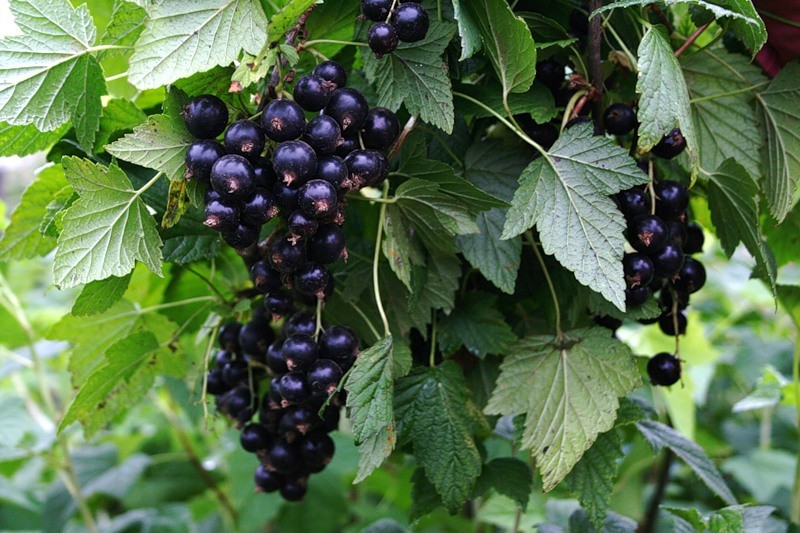
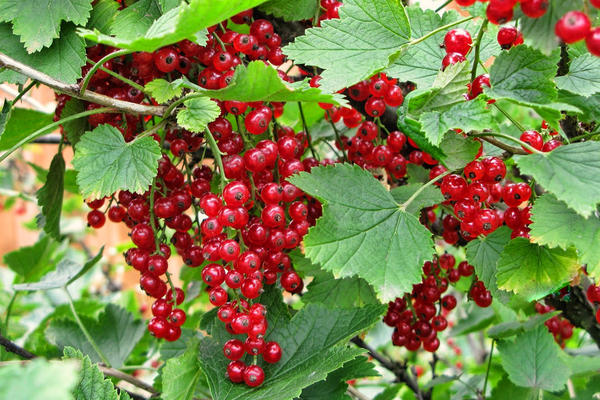
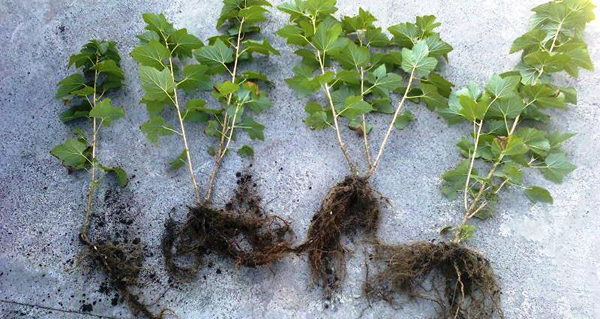
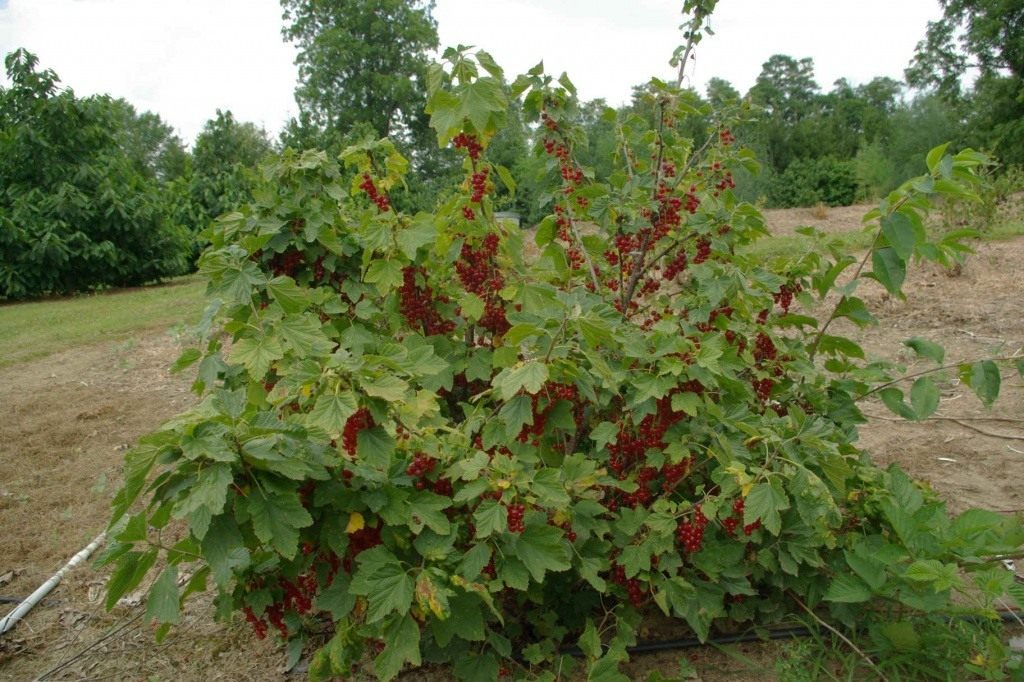
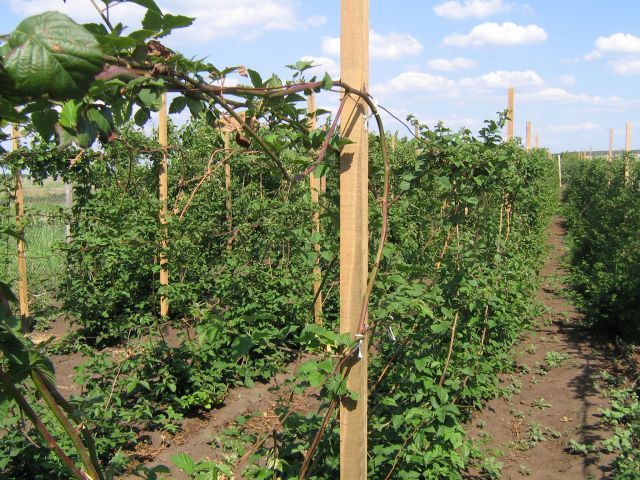

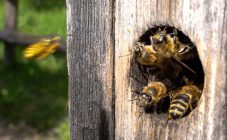
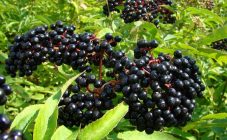
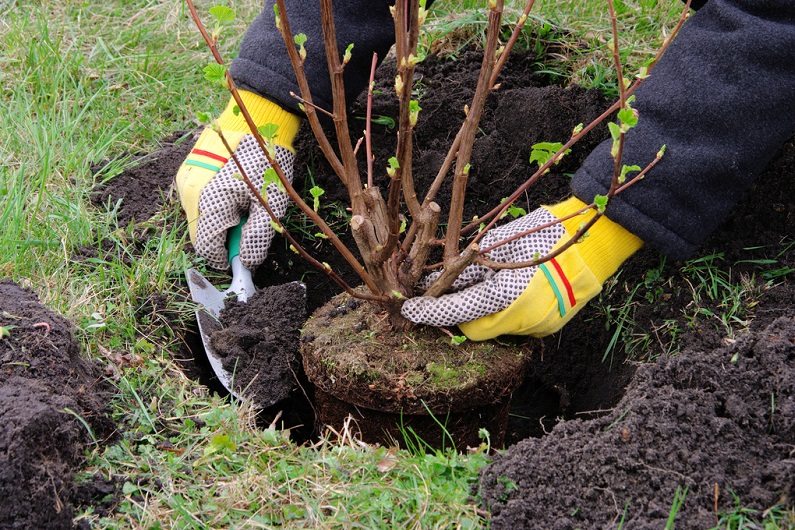

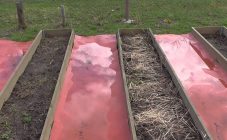







At their summer cottage, it is really very convenient to grow black currants as an ornamental bush. I planted it along the fence at intervals of up to 0.5 m - it looks very good. Does not require special care. Many varieties of currants reach a height of up to 1.5 m. There are plenty to choose from. Plus, you can pick up varieties of different time fruit periods.
Each bush needs its own distance, at first they planted them very densely in the garden, which is why there was no normal harvest. I had to transplant, row, the berries became larger, the currants grew. It is also good to make props so that there is good ventilation.
A good and lecture article about currants. I love currants and grow bushes at home. It is rightly pointed out that she needs enough space to receive enough light. I also discovered new information about the protection of currants from harmful winds, this is really important, I will think about planting some kind of plants around.
Regarding the illumination of the site, I agree, the currants that grow in my shade behind the bathhouse do not give such a yield as the one that grows on the sunny side. It is better, of course, to maintain the maximum distance between the bushes so that they do not suck out the necessary substances and minerals from each other.
In the fall, I plan to plant bushes, otherwise, I don’t know, they planted close. It is very inconvenient to harvest, and the plant is very crowded, the berry does not have time to ripen. Black is generally sour-sour!
On a private small plot, you don't plant currant bushes in rows. The distance to other plants is interesting. Obviously, it shouldn't be small. And certainly a lot of sun and abundant watering. I'm still interested in currant pruning.
In childhood, they were constantly with their parents in the garden. There were a lot of currant bushes of various varieties, but the harvest was small and the berries grew small. Now I understand that the shrubs were simply not planted correctly. Apple trees and cherries always grew very close to each other and next to each other
I planted strawberries between the currant bushes, in the second year the yield increased markedly under the same conditions of daylight hours and temperatures. I think. that strawberries have enriched the land with something, that the harvest has increased.
The topic with the distance between the bushes is a painful one for me, because for many years I have been planting my beloved Belarusian sweet at a distance of less than a meter between the seedlings! (small plot) And I just couldn't understand what she didn't like ...
Yes, I agree with the author of the article. Regarding the fact that you need to plant nearby currant roots. I realized this from my own experience. The currants will ripen faster and get more saturated.